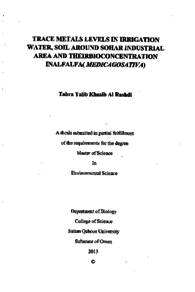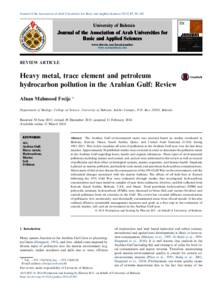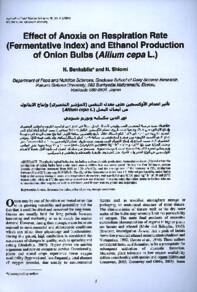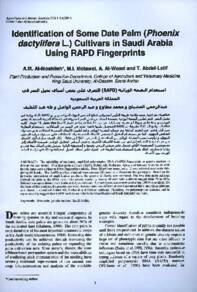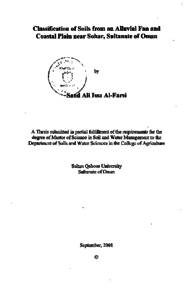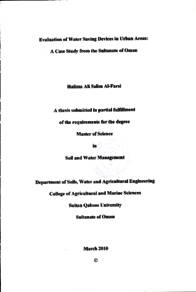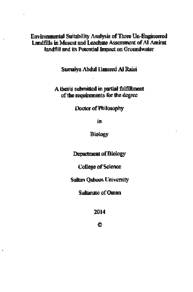وثيقة
Trace metals levels in irrgation water, soil around Sohar Industrial Area and their bioconcentration in alfalfa (Medicago sativa)
الناشر
Sultan Qaboos University
ميلادي
2013
اللغة
الأنجليزية
الملخص الإنجليزي
The concerns of ecosystems with heavy metal contamination around industrial areas are becoming a serious problem all over the world. Sohar industrial area has large number of industries operating in a confined area closer to agriculture farms which cultivates alfalfa as fodder for their livestock. The objectives of this study are measuring the concentration of heavy metals in irrigation water, soil and plant (alfalfa, Medicago sativa), measuring the physio-chemical parameters in irrigation water and soil, evaluating the sources of the heavy metals in plant from soil and irrigation water and calculating bioaccumulation factors in the root and shoot of alfalfa. Metals in water samples are low except Al, Zn and Pb. There is weak correlation between the physiochemical parameters and the presence of the metals except for Al which shows high correlation with salinity. For soil samples, metal concentrations are found to be in the order of Fe >Al> Ni> Zn>Cr> Co>Cu>Pb. Weak correlation between the metals and the physiochemical parameters of the soil. Most of the farm soil are saline in nature. The metal bioaccumulate more in root than shoot and among the metals Pb translocated the maximum from the root to the shoot. In all the samples, the concentrations of metal are below the maximum permissible limit and there is no significant difference with distance. The results demonstrate that there is no risk associated with consumption of alfalfa grown in these farms. Further studies are needed to be conducted to understand the pathways of metal exposure and uptake in plants.
المجموعة
URL المصدر
الملخص العربي
أصبح تراكم المعادن الثقيلة حول المناطق الصناعية من المشاكل البيئية التي تدرس في مختلف دول العالم. تحتوى منطقة صحار الصناعية على العديد من المصانع القريبة إلى المزارع المهتمة بزراعة البرسيم كعلف الماشيتهم. تركز هذه الدراسة على قياس تركيز المعادن الثقيلة (الزنك ، الألمنيوم ، النحاس ، الكوبالت ، الكادميوم ، الحديد، الرصاص، الكروم، النيكل) في مياه الري (الآبار) ، والتربة ، والنبات (البرسيم) وبعض الخواص الفيزيائية والكيميائية للماء والتربة ومن ثم حساب التراكم الأحيائي لمعرفة ما إذا كان هناك أي تراكم للمعادن في السلسلة الغذائية. تم جمع العينات من 8 مزارع أربعة من كل من الموقعين (2 ، 4 كم من المنطقة الصناعية). ثلاث معادن ( الألمونيوم ، الزنك ، الرصاص) ظهرت في عينات الماء مع عدم وجود اختلاف كبير في الموقعين. لكن الألمونيوم أظهر ترابط كبير مع الملوحة. تركيز المعادن في التربة كان على الترتيب الآتي الحديد > الألمونيوم النيكل > الزنك > الكروم ك النحاس > الرصاص. ولا يوجد هناك فرق. في التركيز مع المسافة. أما في عينات النباتات الجذور لديها القدرة على تراكم المعادن أكثر من الساق. والرصاص هو العنصر الذي أظهر أكبر معامل نقل من الجذور إلى الساق من بين بقية العناصر المدروسة. وبشكل عام . جميع تركيز المعادن الثقيلة في العينات المدروسة كانت أقل من الحد الأقصى المسموح به.
قالب العنصر
الرسائل والأطروحات الجامعية

